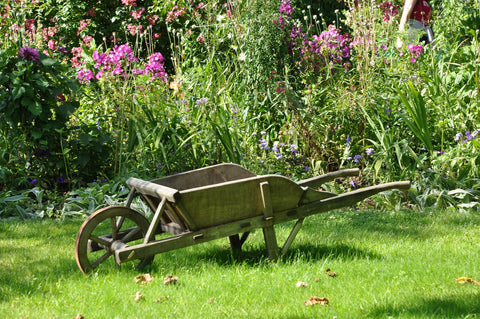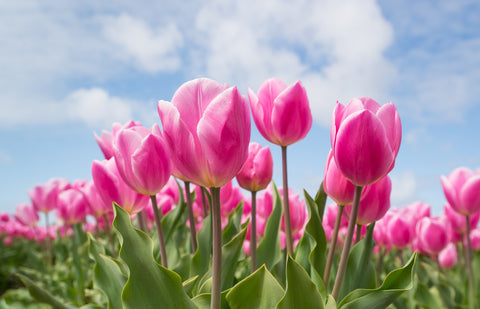Written by: Brenda Holloway, The Mill Home & Garden Specialist
One of the favorite times of the year for amateur and master gardeners alike is fall bulb season! Bulbs are a great way to bring low maintenance, lasting color to your flowerbeds. Bulbs need planting once evening temperatures are getting down to around 40 to 50 degrees Fahrenheit and the ground gets cooler. This is important because bulbs must experience an extended period of cold (winter), but they also need time to settle into the soil; by planting them a few weeks before the first frost, they have the opportunity to develop a strong root system and experience a cold spell. Luckily though, for us procrastinators, one of the nice things about bulbs is that they are pretty hardy, so even if you plant them a little (or much) later, there’s a good chance some of them will come up.
When determining where to plant your bulbs, it’s important to consider a few things. First, they need to be planted in soil that drains well; bulbs do not like wet feet, so they need porous soil. Second, consider the height of each plant and when they will come up. If your plants all come up at the same time, you don’t want to plant tall plants in front of the short plants or you won’t be able to see the short plants. However, if the short plants are early bloomers, and the tall plants late bloomers, then it’s better to plant the tall plants in front of the short, in order to hide the short plants as they die off. Finally, when it comes to placing the bulbs in the ground, a good rule of thumb is that small bulbs get planted shallower (~4” deep) and bigger bulbs get planted deeper (~8” deep). When planting, make sure the roots face down, and the pointy end (area where the plant will grow) faces up. If you’re not sure which end are the roots and which end is the plant, just put the bulb in the ground on its side; as it starts to grow, the plant will most likely work its way up to the surface on its own.
Once planted in the ground, give your bulbs a good water to stimulate the roots, but don’t water them anymore after that. Also, don’t worry about late frosts as your plants start breaking through the ground in the spring. Bulbs are hardy, and are prepared for early frosts. It is possible that early blooms may be knocked out if the frost is bad
























